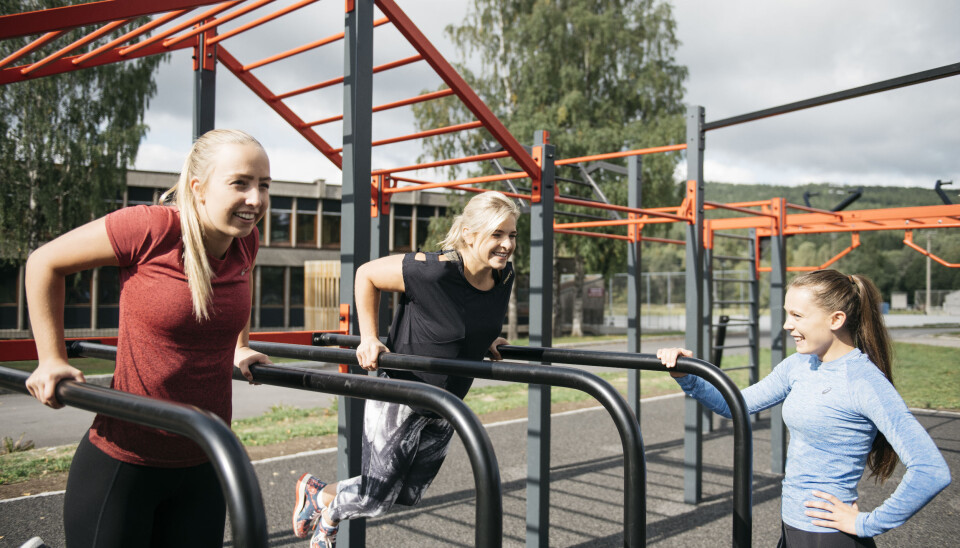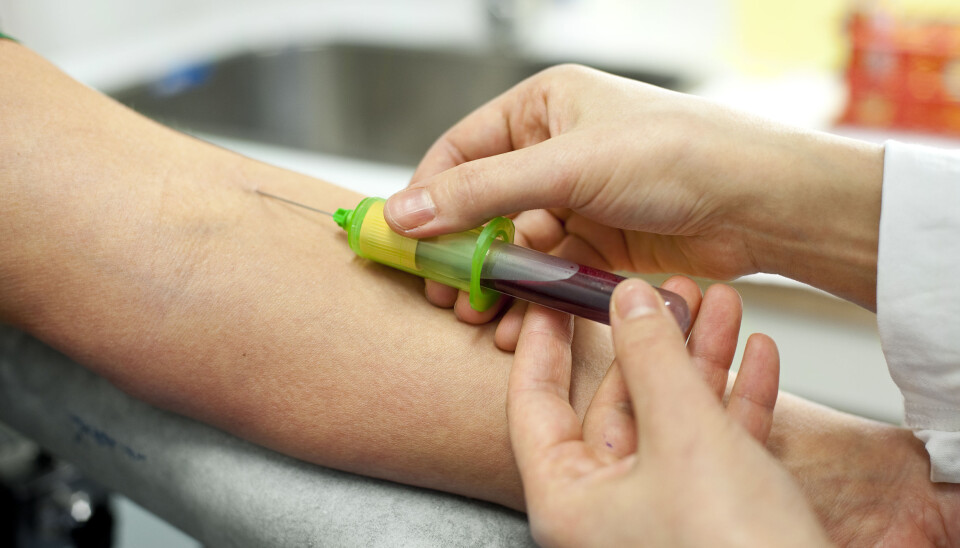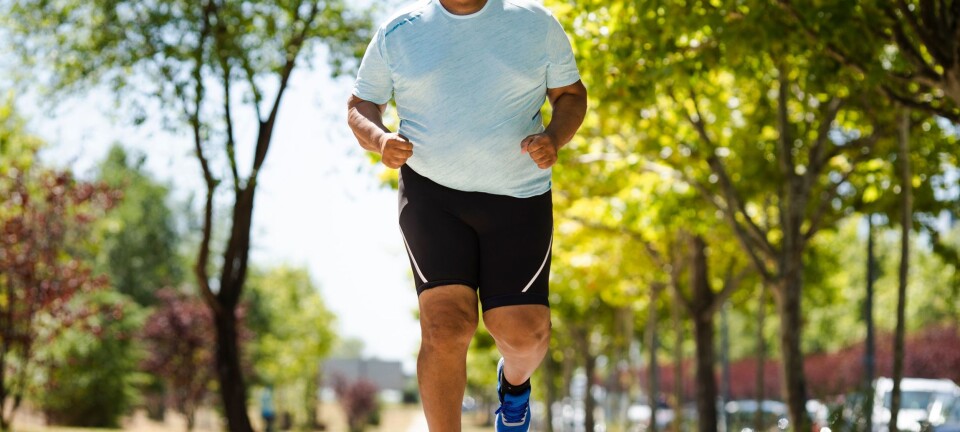This article was produced and financed by The Norwegian School of Sport Sciences - read more

Physical activity even more important for preventing sudden death than previously thought
Can better blood tests reveal if you are at risk of developing life-threatening illnesses as you become older? A new study on a large group of 10-year-olds suggests that they can.
“Physical activity could probably help to reduce the risk of developing fatal heart attacks or strokes. It's too early to draw any conclusions, but my findings provide a much better basis for finding out," says Paul Jones, who will be defending his doctorate at the Norwegian School of Sports Sciences this December.
What really happens to your blood when you're active – or sitting still for too long? And why is it so important?

Jones's thesis provides new knowledge of how so-called lipoproteins work in the blood, how they help to transport fats and cholesterol – and provides your doctor with more things to look out for. And this could eventually provide crucial information about whether or not you are at risk of developing serious illnesses.
His thesis is about something quite simple and something quite difficult. It is partly about how important it is to be physically active and partly about how some tiny chemical helpers in the blood – lipoproteins – act on the body.
Why physical activity prevents infarction Both physical activity and lipoproteins are probably crucial for one common goal: preventing the blood vessels from becoming clogged up which, as a worst case scenario, could be fatal. We are talking about both heart attacks and strokes.
“In order to explain this in greater detail, my thesis shows the relationship between lipoproteins on one hand and physical activity, obesity, sedentary time and fitness, on the other. Developing this link is quite complex, but at the other end of the scale there is just one logical consequence, i.e. there is a link between physical activity, the amount of different types of lipoproteins and the risk of developing life-threatening diseases,” says Jones. “But further research is required in order to draw any conclusions.”
And that is also logical, because Paul Remy Jones has studied a large group of healthy ten-year-olds and compared how active they are with details about the lipoproteins in their blood. In other words, the connection between positive factors.
“Others have studied the negative patterns between these factors and the risk of developing disease. My findings provide an even better tool for understanding this. Everything suggests that physical activity helps to prevent infarction; now we know more about why.
Will reveal atherosclerosis
If those of us who are not experts want to try and understand this, we must first know a bit about the blood and what goes on there.
Most people have heard about cholesterol and about how the prospects for people with too much "bad" cholesterol are not good for longevity. Cholesterol is important for everything ranging from hormones and cell walls to whether or not you suffer from fat deposits in your blood vessels, so-called atherosclerosis.
Obviously, it is not beneficial if your blood vessels become clogged up, especially if this occurs in your heart or your head. Strokes are often fatal.
It would be even better if we could find new ways of detecting the risks involved in developing strokes at an earlier stage. This can now be done by studying the lipoproteins in your blood.
Lipoproteins carry both cholesterol and fats through the bloodstream. Fats are mainly transported so that they can be stored in various places in anticipation of hard times. But they can also accumulate en route and if they build up too much, they can increase the risk of developing atherosclerosis. And if that happens in the heart or the brain, this means an increased risk of stroke. And both the amount and type of cholesterol and lipoproteins are crucial for how great this risk could be.

Avoidance could soon be possible
If you go to your doctor and have your cholesterol checked today, a fairly simple test is carried out which mainly addresses how high your cholesterol is. It also provides a bit of information about your lipoproteins. However, by using a fairly new analytical technique, this NIH doctoral research fellow has succeeded in distinguishing between different types of lipoproteins which have not previously been separated.
The amount of each type is important: they behave completely differently in terms of cholesterol and fats – they have both a positive and a negative impact – and consequently a new test like this can easily reveal how far you have entered into the danger zone.
Jones sums up: "This technique provides us with an overview of many important factors. By looking at types and quantities, we will hopefully be able to help people avoid serious diseases. At least, we should be able to do so soon.”
The method still needs to be fine-tuned.
Low and high-density, good and bad
Jones admits that this is a complicated matter involving a lot of chemistry and several different factors that are connected in complex ways. This is often the case in medicine and physiology.
For example, take physical activity and the fact that it is good for health. It is a simple, accepted truth, but how does it all actually fit together?
“There is no doubt that physical activity prevents a lot of disorders and aches and pains and increases our sense of wellbeing, regardless of age. But science has actually been working its way backwards from that. We’re now starting to know more about the actual biochemical connections, and we can use that for a lot of things," he says. "We have filled in many holes; that was the main aim of the whole project.
And this also involves lipoproteins.
As already mentioned, the type you have a lot or a little of is essential because they deal differently with cholesterol and fats: their presence in the bloodstream determines how fats are stored and deposited or transported and burned (SEE Fact Box). The "low-density" lipoproteins transport fats around the body, while the "high-density" lipoproteins transport them out again.
Drugs not like activity
“The amount is dependent on physical activity. If you exercise, you will build up more of the good high-density proteins, which are involved in removing fats from the body. That's positive," Jones says.
But here there is a slightly technical, yet important problem: according to Jones, we do not know for sure if lipoproteins or exercise are most important to burning fat. In other words, whether or not exercise is responsible for increasing the metabolism or whether or not exercise increases the amount of high-density lipoproteins that remove more fat.
"This might appear to be very theoretical, but it's important for your health and possibly also for your future," says Jones. For example, the pharmaceuticals industry has created drugs that increase the amount of high-density lipoproteins and thus increase the "removal” of fats, resulting in a better fat balance. But this does not reduce the risk of developing cardiovascular diseases.
That might be because natural lipoproteins work differently to synthetic ones. Or because both physical activity and lipoproteins work in very complex ways.
“Either way, it means that physical activity is important for the balance of lipoproteins, fatty tissue and health.”

One step closer
This is especially important for overweight people and people who eat a lot of fatty foods.
“Yes, that's right. It is well known both that moderate to intense physical activity increases both our energy consumption and metabolism and that excess weight itself increases the risk of developing cardiovascular diseases. So, yes, overweight people have the most to gain from it,” says Jones.
“Moreover, people with a relatively high amount of fatty tissue in their bodies also have a lot of fats, especially triglycerides, in their blood, and if they are active, more are burnt and fewer are stored.”
However, more research is needed. Even research about lipoproteins, in order to be able to reveal the risk of stroke as well. According to Jones, they do not yet know exactly which factors are the most important ones. Nor do they know which heart diseases can most easily be predicted (see Fact Box).
Without side effects
Nevertheless, he believes their findings will be important for everyone, not just middle-aged and elderly people who are normally the ones who develop cardiovascular diseases. Plaque can even start to build up in young children.
"Now we also understand better why physical activity is actually so important for our health. This is already noticeable in children. Physical activity, endurance and low levels of body fat provide us with a good composition of lipoproteins. Although obesity is most clearly linked with the “bad” types, activity and endurance will have a positive impact.
Furthermore, he adds: “If it takes time before we can treat more people in order to reduce the risk of developing cardiovascular disease, at least we have obtained several very good arguments in favour of why physical activity is so important. But until such treatment becomes available, each and every one of us must keep active,” he says, adding:
“However, we should remember that drug treatments almost always have negative side effects. Physical activity, on the other hand, has a host of positive side effects, such as better mood, well-being, metabolism and the functioning of most of our organs. So physical activity should pretty much be the first item on the prescription list, for everyone.”
———


































